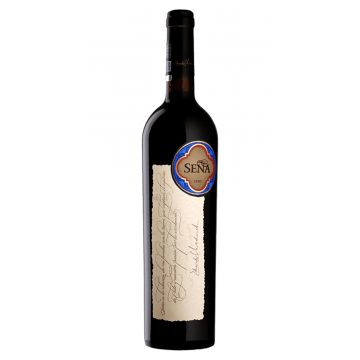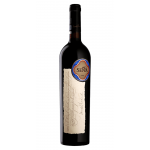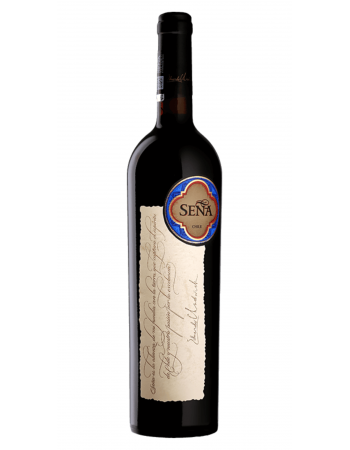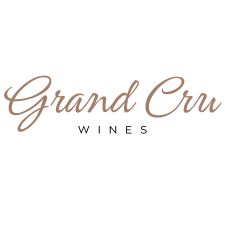2017 Sena (375ML)
-
S$12799
PRE-ORDER
(375 ML)
Vintage: 2017
Region: Aconcagua Valley
Country: Chile
Winemaker Notes
Hot and sunny days marked the 2017 season. Nevertheless, thanks to its privileged coastal location in the Aconcagua Valley -only 40 kilometers away from the Pacific Ocean - the cool breezes that blow in moderated the temperatures. This combination of factors allowed Seña to reach perfect ripeness with a unique balance between concentration and power alongside tension, elegance and freshness.
Blend: 52% Cabernet Sauvignon 15% Malbec 15% Carmenere 10% Cabernet Franc 8% Petit Verdot
About Winery
In 1995, Robert Mondavi and Eduardo Chadwick pioneered one of Chile's first international joint ventures, a bold and forward-thinking move in those times. They set a very challenging goal: to reach the full potential of Chile's wine country and to create a truly world-class wine. These two are distinguished traditional wine families shared the passion for excellence and innovation. Sharing their dream and dedication, in 1997 they released the first vintage of Sena (1995), one of Chile's first iconic wines, marking a milestone and initiating the path for making ultra-premium wines in Chile. Eduardo Chadwick searched alongside Robert Mondavi for four years before finding the ideal terroir in Chile's Valle de Aconcagua. Sena, the Chilean Bordeax-blend, is the culmination of their vision, an expression of consummate quality and character.
Winemaker Notes
Hot and sunny days marked the 2017 season. Nevertheless, thanks to its privileged coastal location in the Aconcagua Valley -only 40 kilometers away from the Pacific Ocean - the cool breezes that blow in moderated the temperatures. This combination of factors allowed Seña to reach perfect ripeness with a unique balance between concentration and power alongside tension, elegance and freshness.
Blend: 52% Cabernet Sauvignon 15% Malbec 15% Carmenere 10% Cabernet Franc 8% Petit Verdot
About Winery
In 1995, Robert Mondavi and Eduardo Chadwick pioneered one of Chile's first international joint ventures, a bold and forward-thinking move in those times. They set a very challenging goal: to reach the full potential of Chile's wine country and to create a truly world-class wine. These two are distinguished traditional wine families shared the passion for excellence and innovation. Sharing their dream and dedication, in 1997 they released the first vintage of Sena (1995), one of Chile's first iconic wines, marking a milestone and initiating the path for making ultra-premium wines in Chile. Eduardo Chadwick searched alongside Robert Mondavi for four years before finding the ideal terroir in Chile's Valle de Aconcagua. Sena, the Chilean Bordeax-blend, is the culmination of their vision, an expression of consummate quality and character.
JS99
James Suckling
The aromas of blackberries, cedar, sandalwood and black tea are compelling. Black olives. Rosemary and sage undertones. Full-bodied, rich and powerful Seña with impressive and powerful tannins, yet harmony and balance. Fruit-forward. Lightly chewy. Fresh and energetic wine in a hot year. Broad-shouldered. Drink after 2022.
D97
Decanter
Francisco Baettig harvested this Bordeaux blend 20 days early to deliver this elegant, bright, somehow subdued wine. Complex herbs, cassis and cedar layered with figs and plums. Stylish palate, juicy concentration and a grainy, textured structure, framed by a vibrant acidity. Fluid and elegant. Drinking Window 2021 - 2033
RP96
Robert Parker's Wine Advocate
They explained how the 2017 Seña was produced with "grapes that were handpicked in the morning and transported to the winery in 12-kilogram boxes for a careful inspection on a double sorting table. The grapes fermented in stainless steel tanks at 25 to 31 degrees Celsius (77 to 88 degrees Fahrenheit), depending on the variety and the level of extraction desired. Three pump-overs were carried out daily during fermentation to rotate the volume of the tank 0.5 to 1.5 times. Total maceration time ranged from 15 to 30 days for the Cabernet Sauvignon, Merlot, Malbec and Carmenère and eight to 12 days for the Petit Verdot, according to the development of each block vinified. The final blend was racked to French oak barrels (67% new) and aged for 22 months, during which time malolactic fermentation and stabilization occurred naturally." They harvested early and managed to keep the same alcohol level as the 2016. This has less aromatic exuberance and is a more serious vintage with good concentration and weight, not as aerial as the 2016. They increased the amount of wine matured in larger 2,500-liter foudres instead of barrique. This is more powerful, structured and concentrated, like a drier version of the 2015, with some grainy tannins, more acidity, more austerity and less primary fruit. The tannins have some grip (the earlier harvest perhaps?) and might need a little bit of time in bottle, and the wine seems to have what it takes to develop nicely in bottle. They produced 120,000 bottles of this. It was bottled in February and March 2019. Just for the record, the varietal breakdown is 52% Cabernet Sauvignon, 15% Malbec, 15% Carmenère, 10% Cabernet Franc and 8% Petit Verdot, reflecting a good year for Carmenère and Cabernet Franc






